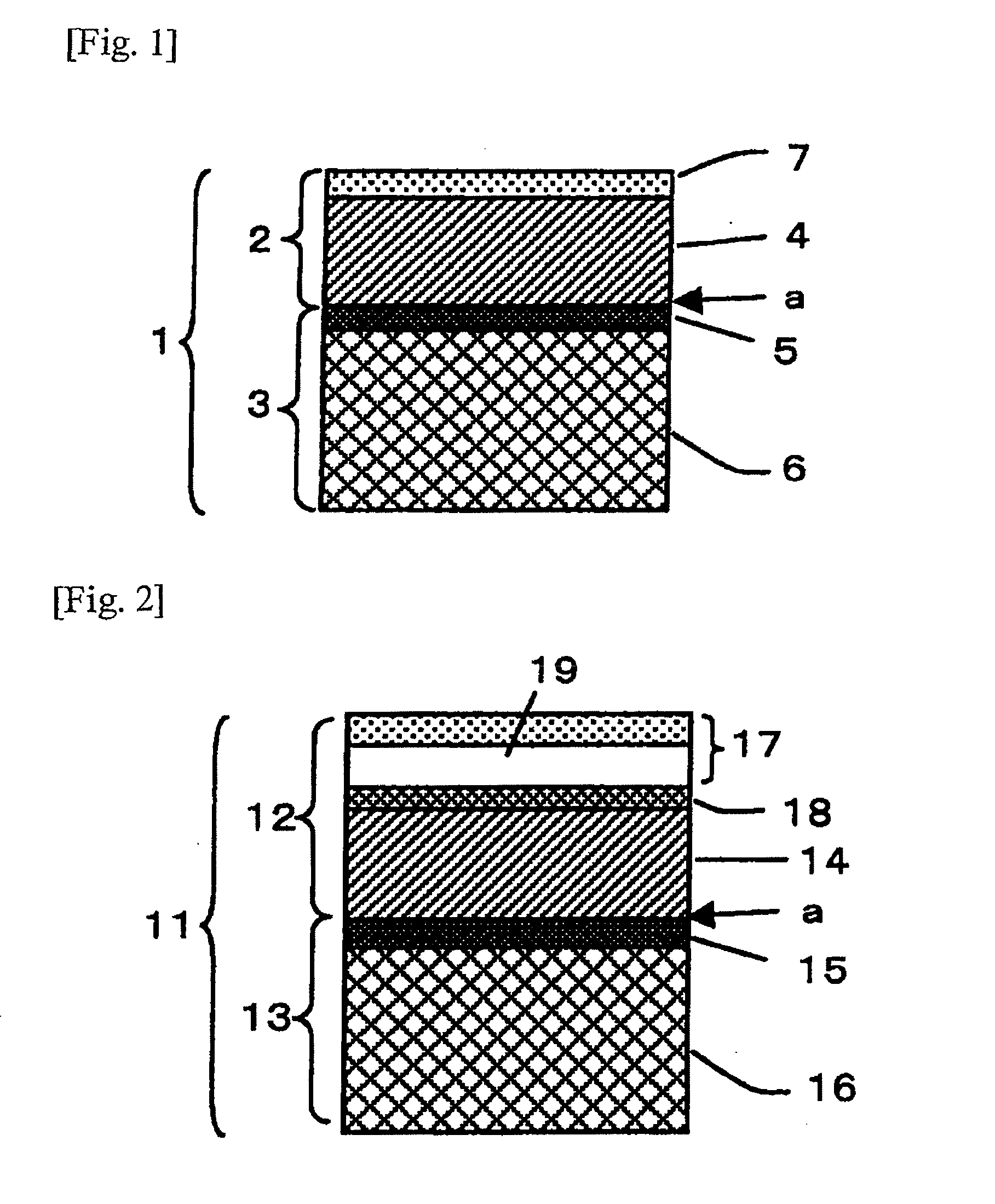Electrostatic adsorbable sheet
a technology of adsorbable sheets and adsorbable sheets, applied in the direction of stamps, synthetic resin layered products, printing, etc., can solve the problems of easy peeling, loss of original surface smoothness, and object may gradually get dirty, so as to avoid printing process troubles and good ink adhesion
- Summary
- Abstract
- Description
- Claims
- Application Information
AI Technical Summary
Benefits of technology
Problems solved by technology
Method used
Image
Examples
production example 4
for Resin Film Layer (A)
[0153]The thermoplastic resin (c) was kneaded in an extruder set at 230° C., then fed into an extrusion die set at 250° C. and sheetwise extruded, and this was cooled with a cooling unit to obtain an unstretched sheet. The unstretched sheet was heated to 150° C. and stretched fourfold in the lengthwise direction. The thermoplastic resin (f) was kneaded in an extruder set at 250° C. and then sheetwise extruded and laminated on the surface and the back surface of the above-prepared fourfold-stretched film, thereby obtaining a three-layered laminate film. Next, the three-layered laminate film was cooled to 60° C., then using a tenter oven, this was again heated to about 145° C. and stretched sevenfold in the lateral direction, and thereafter heat treatment in a heat-setting zone conditioned at 160° C. was carried out. Subsequently, this was cooled to 60° C., then processed for corona discharge treatment on one side thereof; and trimmed to cut off the deckle edge...
production example 5
for Resin Film Layer (A)
[0154]The thermoplastic resin (c) was kneaded in an extruder set at 230° C., then fed into an extrusion die set at 250° C. and sheetwise extruded, and this was cooled with a cooling unit to obtain an unstretched sheet. The unstretched sheet was heated to 150° C. and stretched fourfold in the lengthwise direction. The thermoplastic resin (e) was kneaded in an extruder set at 250° C. and then sheetwise extruded and laminated on the surface and the back surface of the above-prepared fourfold-stretched film, thereby obtaining a three-layered laminate film. Next, the three-layered laminate film was cooled to 60° C., then using a tenter oven, this was again heated to about 145° C. and stretched eightfold in the lateral direction, and thereafter heat treatment in a heat-setting zone conditioned at 160° C. was carried out. Subsequently, this was cooled to 60° C., then processed for corona discharge treatment on one side thereof, and trimmed to cut off the deckle edge...
production example 6
for Resin Film Layer (A)
[0155]A 50 μm-thick white film having the same constitution as in Production Example 1 was obtained, for which, however, the three-layered film was processed for corona discharge treatment on both sides thereof.
PUM
| Property | Measurement | Unit |
|---|---|---|
| porosity | aaaaa | aaaaa |
| thickness | aaaaa | aaaaa |
| thickness | aaaaa | aaaaa |
Abstract
Description
Claims
Application Information
 Login to View More
Login to View More - R&D
- Intellectual Property
- Life Sciences
- Materials
- Tech Scout
- Unparalleled Data Quality
- Higher Quality Content
- 60% Fewer Hallucinations
Browse by: Latest US Patents, China's latest patents, Technical Efficacy Thesaurus, Application Domain, Technology Topic, Popular Technical Reports.
© 2025 PatSnap. All rights reserved.Legal|Privacy policy|Modern Slavery Act Transparency Statement|Sitemap|About US| Contact US: help@patsnap.com



